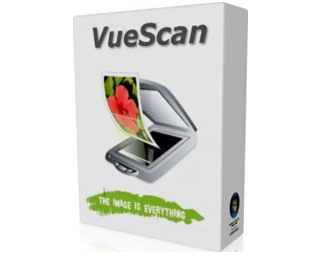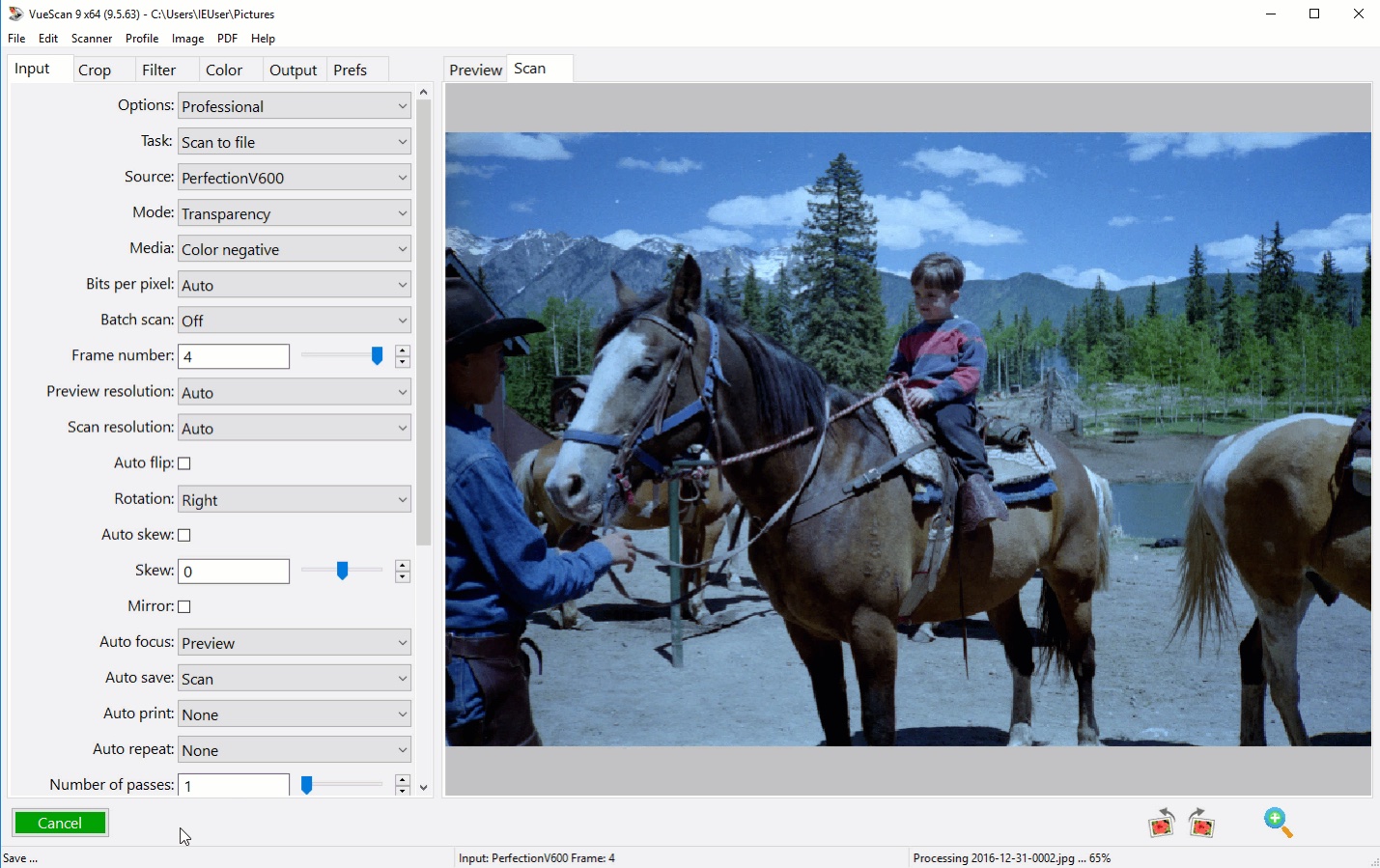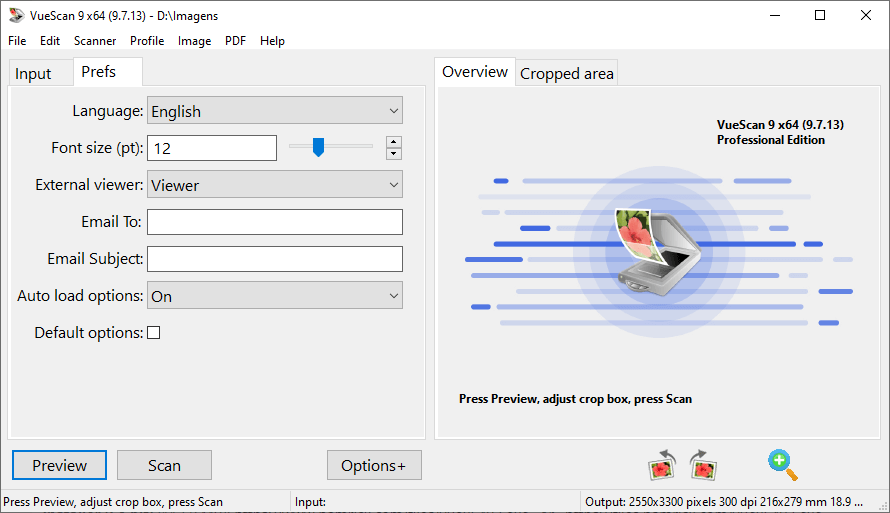
Because the house is in shadow, the white shows as grey. In this image there is a small white house in the distance. From there it's all up to your highly trained eye.

As Bruce explains, one can often use the grey dropper in the Curves dialogue to at least get to square one. For further help see also Appendix 3: Of Casts and Curves at the bottom of this page. See Color-Correcting Photographs in Photoshop by Bruce Fraser. Fortunately, this has already been excellently done.
#Slide scanning with vuescan options full
Removing a blue cast in the darker huesĮxplaining colour cast removal is a full tutorial topic in itself. Use the separate R, B, and G channels in the Curves dialogue to remove any colour casts:įig 7. For flash and daylight the White balance choice seems to work extremely well.Ĭolor/Black point and White point: leave the black point at 0 and the White point at 1.Ĭolor/Output color space: use sRGB unless you have profiled your system, in which case you'll know which one you want to use. Input/Scan resolution: See my FAQ on scanning resolution.Ĭolor/Color balance: Notice the options for tungsten, fluorescent, and night. Input/Bits per pixel: See my FAQ on scanning bit depth. I use this whenever the neg has extremely bright areas, such as sunlit clouds or backlighting or specular glare.


Input/Long exposure pass: A wonderful VueScan bonus. That may be an idiosyncracy of my scanner. Input/Number of passes: I find multple pass scanning actually increases noise. Here are a few thoughts on some of the other options in VueScan: The basic settings are to select Color Negative as the media type, White Balance as the Color Balance type, and pick the closest film brand to what you are using you can find among the out-of-date choices. VueScan has a daunting number of control options in advanced mode. Same film frame same scanner competent software. Notice that the blue sky has mysteriously re-appeared. Load film strip containing chosen frame in holder start VueScan click preview.


 0 kommentar(er)
0 kommentar(er)
